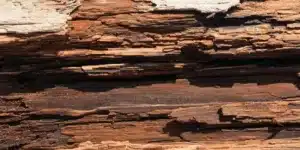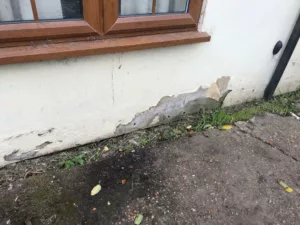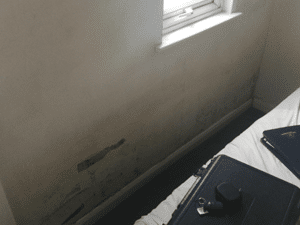Book your survey today!
Most Popular FAQs
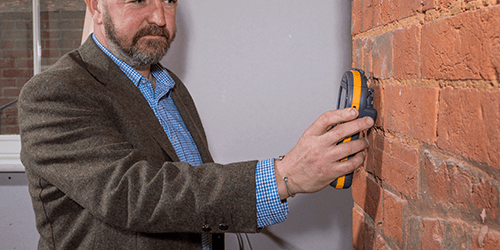
In short - No! We value our experienced surveyor's time and can give you the best advice around. We charge a small fee to cover some of the costs as many times no works or treatments are required just some straight forward maintenance will remedy the issue.
We have a range of survey fee’s from £95 to £295 to carry out a timber and damp inspection. Many clients over the years have said how a thorough honest investigation into their damp and timber problem completely put their mind at rest and saved them money.
The video below explains why we charge for surveys:
We are based in Woodchurch TN26, near Ashford in Kent.
Our surveyor will attend to properties within all of Kent covering TN, BR, DA, CT and ME East Sussex and most of the SE Postcodes in South East London. Call us now to check availability on 01732 884535 or visit our Contact Us page
We call this a "Pre-Purchase" survey. We charge £195.00 plus VAT for a Comprehensive Survey. This includes a full written report of our findings sent to you by email, post or both. We can usually accommodate you in the surveyors diary upto 7 days of your call.
It may be you have seen evidence of damp or timber issues, or your building homebuyers survey has identified issues and suggested you get in an expert.
We can assist by giving you a survey of the affected areas, or the full property as you require to check out any possible issues along with providing details of how to remedy and the cost to do this. Get in touch.
We are full contractor members of the PCA - Property Care Association who are our trade association.
To become full members you need to be fully audited in numerous areas including, customer service, health & safety, personnel & training, qualifications, financial and insurances. This ensures you are dealing with a premium contractor and get the best advice available.
Be aware that being PCA trained is NOT the same as being a full PCA member.
We really are at the top of our game! We specialise in all things damp, timber and rot!
All surveys and inspections are carried out by the company owner Dean Webster
Dean has been working within this industry since 1988. Dean has studied and passed both the CSRT (now the CSTDB) Certified Surveyor of Timber and Dampness in Buildings – AND the CSSW – Certified Surveyor in Structural Waterproofing. These are industry-recognised qualifications and identify specialists in our field – there are less than 150 individuals who hold both of these qualifications within the UK.
Dean is also apart of the PCA (Property Care Association), CPD (Continual Professional Development scheme), and attends regular updates, seminars, and workshops in specialist areas.
Dean has a way of explaining problems in layman’s terms so you really do walk away understanding WHY your problem has occurred along with the best way to remedy it.
If any doubt check out our reviews!
We predominantly work on pre WW2 properties so those dated 1939 and before.
We have extensive experience in designing and implementing solutions for historic, period and listed buildings.
Get in touch with our team to talk over the issue you are experiencing.
Damp FAQs
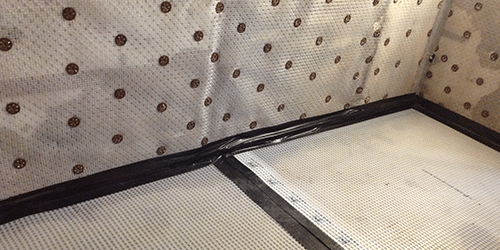
There are 3 main types of Damp - Rising Damp (water from the ground), Condensation (moisture in the air) and Penetrating / Lateral Damp (moisture migrating into a building).
Rising damp is generally characterised by a descending moisture gradient within a wall from floor level that can go up as far as 5ft or 1.5meters in height.
It is usually associated with salts within the groundwater, known as nitrates, sulphates and chlorides. These salts will move to the surface of the wall, as part of the drying process, leaving deposits and spoiling the decoration.
Rising damp can be complicated and the severity can be impacted by a number of factors including the type of construction, the amount of moisture in the ground and both the internal and external environment.
Treatments can include a damp proof course, installation of membranes and plastering of internal walls, it is always best to seek expert advice to avoid costly mistakes and misdiagnosis. Ensuring the property is well maintained externally will help greatly in the battle against dampness.
Condensation is created when there is moisture in the air. We regularly see condensation on cold surfaces such as windows where warm air containing moisture has come in contact with a cold surface and “condensed” in the built environment.
As condensation is caused by moisture within the air and poor environmental conditions, it is always best to ventilate and heat the area, open windows as much as possible, use an extractor fan when cooking and install extractor fans in bathrooms.
For more complex problems it is always best to consult a professional for advice.
Penetrating damp is caused by water ingress from things such as broken rainwater goods, issues with the roofing or groundwater migrating into the building.
Lateral Damp - groundwater can also migrate into a building horizontally. This is when the internal floor level is below the external ground level, therefore ‘below ground’ with possible earth retaining wall (even a high flower bed can cause this) moisture from the ground penetrates laterally into the walls causing dampness.
First, you will need to identify the source of the ingress, once you have identified the source remedial works will need to take place to stop water from gaining access to the building.
It is important to identify and rectify the source of the problem as soon as possible to prevent ongoing damage. We can provide a full survey and solutions for both penetrating and lateral damp.
We would never recommend using paint as this just masks the problem. We would always advise identifying the source of the damp.
It could be as easy as fixing a broken gutter, a roof tile or re-pointing the render on an external wall so over time the moisture will stop penetrating.
However, it could be a larger job and require an expert to identify the problem and offer a solution.
If the cavity has debris or other materials within it and moisture gains access through the external skin, this will in time move across the debris and cause dampness on the inner cavity skin leading to internal dampness, this can include the cavity wall insulation.
There are products on the market that you can paint on walls to reduce condensation. The best on the market are products such as NVirol Suretherm. This paint uses “glass microsphere technology” and when painted onto walls it lifts the temperature making it warmer therefore not attractive to condensation. This inhibits mould growth and reduces condensation.
Anti-Condensation paint is not always enough for properties with extensive issues, but if a wall is cold and attracting moisture from the air we have found that this paint helps. By raising the temperature of the wall also reflects back the warm air making the room feel warmer. Ensuring the internal environment is controlled with suitable heat and ventilation will help.
If you are interested in other Condensation Treatments then we can assist you with a specified solution to your problem.
The cost of a professional survey with South East Timber and Damp is £95.
South East Timber and Damp are members of the Property Care Association.
PCA members are professional and trustworthy carrying out thorough surveys delivering peace of mind through detailed investigation and correct diagnosis. All members are trained, experienced, vetted and qualified surveyors and contractors.
If works are required members can complete highly specialised repairs and remedial treatments, effectively, efficiently and safely, using skilled experienced site operatives.
Look out for the PCA logo before you select a contractor.
Survey & Guarantee FAQs

In short – No! We value our experienced surveyors Dean and Lee’s time and can give you the best advice around. We charge a small fee to cover some of the costs as many times some straight forward maintenance advice will remedy the issue without any works by us required.
We have a range of survey fee’s from £95 to £295 to carry out a timber and damp inspection. Many clients over the years have said how a thorough honest investigation into their damp and timber problem completely put their mind at rest and saved them money.
The video below explains why we charge for surveys:
In general, if remedial works have been carried out, then – YES. However, check your written report to ascertain the length and type of guarantee and any exclusions or maintenance requirements.
Our guarantees are up to 10 years long.
We KNOW there are 20 and 30-year guarantees out there. However, our insurance company limits us to offering realistic length guarantees. REMEMBER, a guarantee is WORTHLESS if the company has closed down!
We do offer the ability to purchase for a one-time fee a GPI insurance policy to run alongside our guarantee. See our dedicated page on GUARANTEES to find out more.
This is subject to the area to be surveyed. We would say the minimum time; if it is in an isolated area in a small house, then it could be 40 minutes. However, if the property is substantially larger and requires both a timber and damp inspection, this could mean 2 hours plus.
The surveyor will do both external and internal inspections of the property, along with inspections of accessible areas. Obstructions, furniture, boxes, panelling, and floorboards will not be moved. It is for the property owner to move these obstructions to allow the inspection.
Woodworm FAQs
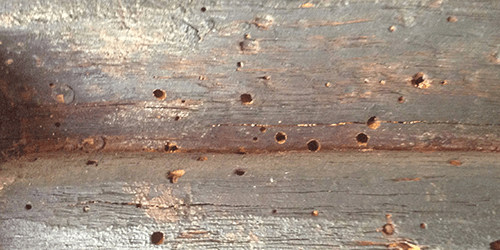

Woodworm is the most common name for woodboring insects which spend most of their life feeding and boring within timbers.
There are many different types of a native wood-boring beetle in the UK. The most common is unsurprisingly called ‘Common Furniture Beetle’ (Anobium Punctatum). In the South and South East of the UK, Deathwatch Beetle can also be common due to our historic housing stock.
This is the second stage in the life cycle of woodworm in which they spend their time boring under the surface of the timber and feeding in order to emerge as mature adult beetles in the warmer spring months, generally between May and August.
Woodworm has 4 stages in its life cycle: egg, larva, pupa and finally the adult beetle.
Woodworm damage is most easily identified by numerous tiny holes in the timber, which are caused by the emerging adult beetle.
The size and shape of the hole depends on the type of beetle infestation present. A fine powder is often present; this is known as frass or bore dust. Most aged properties can have a presence of wood-boring insects, ensuring correct identification of species and whether they are active or not is important.
It is unlikely that once the female has laid her eggs in one place she will go and find another piece of wood unless of course, the original place becomes uninhabitable.
There is the chance that once the eggs hatch they can be present in other areas.
The best way to treat Woodworm will vary depending on the type of beetle.
Generally, it will consist of a chemical spray treatment. Ensuring timbers are maintained in as dry a condition as possible will also help in the fight against active presence.
It’s always a good idea to check for the presence regularly. Keeping your home warm and well vented will help to keep timber dry and deter woodworm, and of course, check any wooded furniture coming into the home for signs of an infection.
If wood-boring insects are present in the structure of the house this can, of course, affect the value. You will need to call a professional to carry out a complete survey and create a treatment plan.
The overall cost of treatments depends on various factors, including the size of areas to be treated and the type of treatment to be applied depending on the species. Often, wood-boring insect treatments may not be needed.
Wet and Dry Rot FAQs
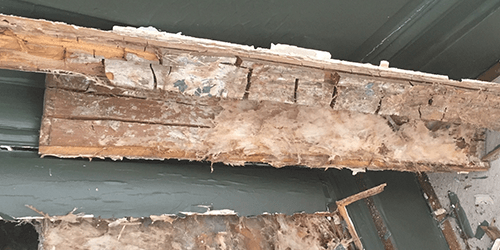
Both types of rot cause decay both inside and outside of properties. Wet rot requires a high moisture presence to thrive and grow, whilst dry rot requires a much lower level of moisture to survive.
Dry rot has a far great capacity to destroy and damage timber structures than wet rot and is generally more difficult to remedy.
Wet rot, also know Coniophora Puteana, refers to several species of fungi that are involved in the natural decaying process of timbers where high moisture levels are present.
The most common species of wet rot is, otherwise known as ‘Cellar Fungus’. It is common on older properties in one form or another.
Dry rot, also known as Serpula lacrymans, refers to a fungus that occurs when there is a low level of moisture in the air combined with poor ventilation.
Despite its name, Dry rot affects damp/moist timber. Dry rot is a destructive form of fungi.
Wet rot is often identified by a damp and musty smell with localised fungus growing on the timber. Affected timber can look darker than the surrounding areas and can have a spongy texture due to the high moisture levels.
Wet rot is often more localised than dry rot. Wet rot has a tendency to show up in unseen areas, for example, if floorboards feel ‘springy’ when walking over them, this can be a sign of wet rot.
There are 4 stages of dry rot growth – Spores, Hyphae, Mycelium, Fruiting body. Wood can shrink and darken in colour, there can be a damp type of smell and as with wet rot grey threads similar to cobwebs can be present. Mycelium is the penultimate stage of growth and will appear as ‘cotton wool’ type balls. The final stage is the fruiting body which has a mushroom type of appearance and often has an orange surface with large pores.
If you need an expert opinion, then get in touch. For a correct diagnosis get in touch. Read here more info on when it has been misdiagnosed
It is unlikely that wet rot will spread although dry rot can spread to other areas very quickly given the right conditions.
Firstly, the cause of the damp will need to be identified and rectified so the area can be dried out. Damaged and rotten timber will need to be replaced if it has been weakened.
As with Wet Rot, the cause of the damp will need to be identified and treated and the area dried out.
Affected areas may need to be treated with a masonry biocide.Rotten timbers will need to be replaced where they have been weakened.
Finally, ventilation will need to be improved to prevent the reoccurrence of another infection. The most important part of the treatment is correctly identifying the source and rectifying the defect.
Contact Our Team

Our team in the office are very experienced and knowledgable about the industry. Get in touch with them today to get the right advice in dealing with your damp issues.
Damp Case Studies

Need help? Book a survey at a time to suit your schedule
Our mission is to give you the peace of mind you deserve when it comes to waterproofing your house or business. Commission a survey from our team to assess your situation professionally.

